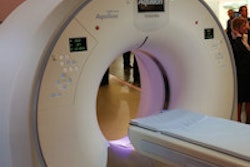Dear MRI Insider,
The field-strength war rages on among MRI experts, it seems.
High-field enthusiasts such as Dr. Siegfried Trattnig from Vienna are convinced that 7-tesla systems have a central role to play in the future. Click here to learn more.
But other shrewd observers believe that economic factors will have a decisive impact on the field strength of new MRI units during the next few years. One market analyst thinks the future is all about 1.5-tesla machines. Get the story here.
Advanced MRI techniques such as diffusion tensor imaging and arterial spin labeling can produce some valuable clinical information these days. This topic came under close scrutiny at ECR 2015 last week. Click here to find out more.
The introduction of PET/MR scanners has raised many issues. For instance, the quantification of PET images is limited by poor spatial resolution and associated partial-volume effects, as well as the inherently low signal-to-noise ratio of PET, but MRI can help here, according to new research. Learn more here.
T1 and T2 relaxation times are integral to the optimum use of MRI, yet they are proving to be controversial. The Maverinck -- Dr. Peter Rinck, PhD -- has attempted to shed some light on this difficult subject. He has had extensive experience of MRI over many years, and his column makes fascinating reading. For the full details, click here.
This letter features only a few of the many articles posted over recent weeks in the MRI Community. Please do check out the rest of our coverage below.




















